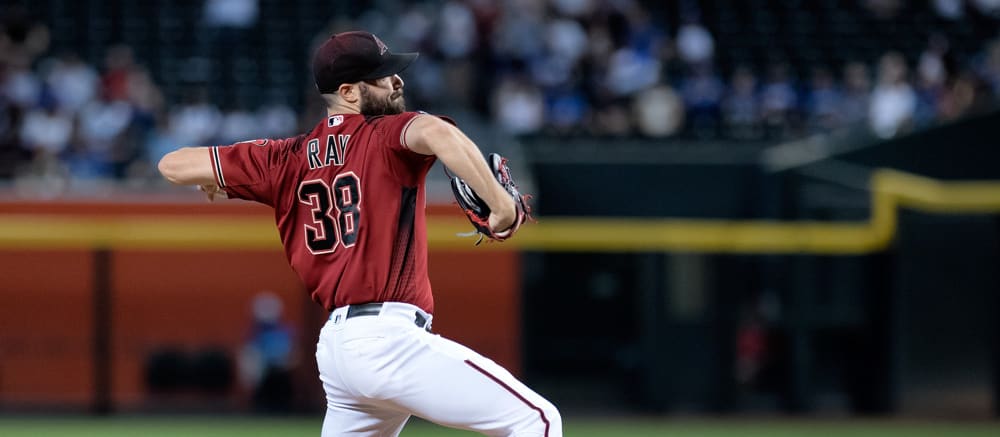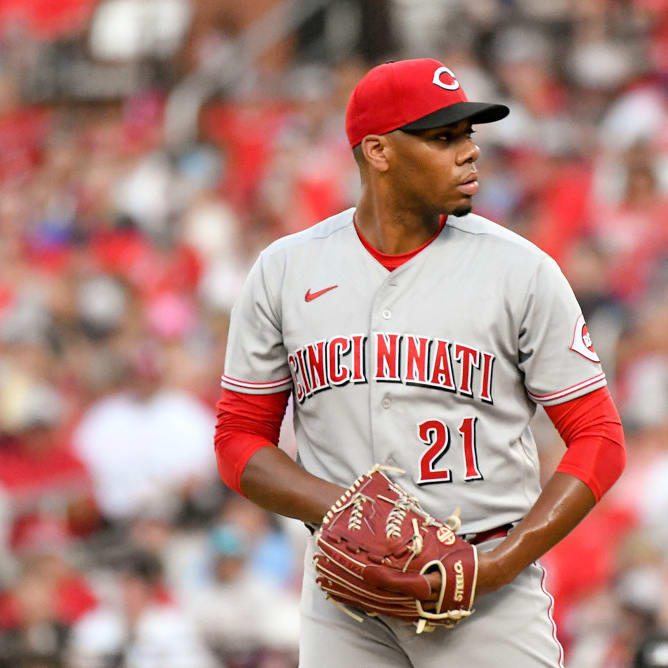This article is part of our The Z Files series.
Last week, I wrote about Buying High, a notion opposite to the usual buy-low, sell-high mantra. The natural follow-up is a piece on selling low: getting rid of a player, even though conventional wisdom says to wait it out, as you're not going to get back enough in a trade when dealing a player at his low point.
It's probably no surprise I manage a lot of fantasy baseball teams. I mean, a ton. Why is this important? It's easy to write about players when you have no skin in the game. It's harder, well, maybe not harder, but realer when you write about players on your roster. There's a self-imposed measure of accountability. If I recommend trading or using a player, I better be doing the same or I lose credibility.
So, the plan was to go through my rosters, looking for sell-low players. The problem was, I couldn't find any, at least with enough juice to be column-worthy.
On the other hand, my teams are littered with players off to a sluggish start, especially pitchers. Yet, I'm not ready to cut bait. As such, instead of discussing some sell-low candidates, the new plan is reviewing several hurlers slow out of the gate. I'll discuss why I'm holding onto them and whether I'm keeping them active or stashing on reserve.
First, I need to explain my philosophy with respect to benching struggling pitchers. There's a fine line between being aggressive and reckless, but my research shows you can absorb
Last week, I wrote about Buying High, a notion opposite to the usual buy-low, sell-high mantra. The natural follow-up is a piece on selling low: getting rid of a player, even though conventional wisdom says to wait it out, as you're not going to get back enough in a trade when dealing a player at his low point.
It's probably no surprise I manage a lot of fantasy baseball teams. I mean, a ton. Why is this important? It's easy to write about players when you have no skin in the game. It's harder, well, maybe not harder, but realer when you write about players on your roster. There's a self-imposed measure of accountability. If I recommend trading or using a player, I better be doing the same or I lose credibility.
So, the plan was to go through my rosters, looking for sell-low players. The problem was, I couldn't find any, at least with enough juice to be column-worthy.
On the other hand, my teams are littered with players off to a sluggish start, especially pitchers. Yet, I'm not ready to cut bait. As such, instead of discussing some sell-low candidates, the new plan is reviewing several hurlers slow out of the gate. I'll discuss why I'm holding onto them and whether I'm keeping them active or stashing on reserve.
First, I need to explain my philosophy with respect to benching struggling pitchers. There's a fine line between being aggressive and reckless, but my research shows you can absorb a few bad starts, though ultimately it depends on where you're situated in the ratio categories. Furthermore, for most pitchers, it's best to have a season-long expectation, which includes the peaks and valleys of a typical season. Timing when to use or bench most hurlers is a fool's errand. The prudent approach is leaving the pitcher active, lest you have the poor starts on your ledger, lacking some of the good ones for balance.
That said, there are instances where reserving a struggling arm until he shows signs of improvement are warranted. In these scenarios, it's best to focus on skills, not outcomes. Depending on the pitchers, stuff like velocity, spin rate, swinging strike rate, ground ball rate etc. are more telling than ERA.
With that as a backdrop, here are five slow-starting pitchers, all populating several of my rosters.
Zack Greinke, Arizona Diamondbacks
Blinded by science, sense of humidor, whatever, Greinke was among my top-10 starters, despite sporting a lower strikeout rate than other similarly ranked pitchers. Admittedly, there was some concern late in the spring when Greinke himself remarked he didn't feel right. However, he soon shook that off and entered the 2018 campaign all systems go.
To date, the veteran righty is sporting a bloated 4.80 ERA, albeit with a tidy 1.13 WHIP. His strikeout and walk rates are both stellar, the unexpected runs come from six homers allowed in just 30 innings. Greinke has surrendered at least one long ball in each of his five outings. Four of the six dingers came in his three road efforts.
Since 2007, Greinke's HR/9 didn't eclipse 1.0 until he joined the Diamondbacks in 2016. His HR/9 climbed to 1.30 his first season with the club, then slid to 1.11 last season. With the humidor in place, the expectation was a return to a sub-1.0 mark, and he still may get there. A slightly high fly ball rate and an inflated HR/FB are due for regression.
What I'm doing: Greinke remains active in all lineups.
Robbie Ray, Arizona Diamondbacks
The same allure that drove people to Greinke was transcended by Ray. Most were on Ray for his strikeouts, so he wasn't cheap. Even with the humidor, there's risk involved as Ray's walk rate has historically been above average. However, a 3.1 BB/9 after the break last season, including a 2.6 mark in September, offered hope of a carryover. So far, the results are disappointing.
The punchouts are still there, with 42 in 26.1 innings. A whopping 17 walks in that span is disconcerting. Compounding the early-season woes is a .358 batting average on balls in play. This is especially alarming in light of the fact Ray was thought to own the skill of inducing a lot of soft contact.
Health-wise, there doesn't appear to be a cause for concern. Ray is just slow out of the gate, struggling with control. Perhaps there's a snowball effect as Ray is much better from the windup compared to out of the stretch. The high hit rate is putting Ray in the stretch, where he walks more and whiffs fewer. Once the hit rate normalizes, Ray's free passes should wane.
What I'm doing: Like his teammate, Ray is not budging, remaining firmly entrenched in all my starting lineups.
Luis Castillo, Cincinnati Reds
Somewhat out of character, I put my trust into a promising, but not yet established, arm. After talking to many of my colleagues whose expertise is pitching, I decided to buy in on Castillo. So far, I chose poorly. But, there's still a lot of season left.
In a recent Z Files, I hypothesized working in several cold-weather games hurt Castillo, as he couldn't get a feel for his effective changeup. Perhaps that was true, but his two most recent starts came in a closed-roof Miller Park and a more temperate Busch Stadium. In those 11.2 innings, Castillo fanned 11 but walked seven, indicating he's still struggling with his control.
Looking under the hood, Castillo's velocity and spin rate are down from last season. Normally, this would be worrisome, if not an indication of a possible injury. However, recall that Castillo came up in late June, after pitching for a few months at Double-A Pensacola. I'm not sure it's apples to apples, comparing his 2018 start to when he was when promoted midseason.
What I'm doing: Castillo is exactly the type of pitcher I keep active through the early scuffles. He has the stuff to keep even the best offenses in check. I need the impending stellar efforts to counter the early hiccups.
Sonny Gray, New York Yankees
Gray was a favorite as many are still scared off by Yankee Stadium, feeling it's a very favorable hitter's venue. While it's great for homers, the ballpark in the Bronx is just a little above average in terms of runs. This difference between perception and reality landed Gray on a few rosters as my SP4, occasionally SP3. His groundball tilt and veteran caginess should keep the homers in check.
It's been an ugly start to the 2018 campaign, as Gray has posted an unsightly 7.71 ERA and 2.14 WHIP. Could weather be the culprit? Gray opened in the Rogers Centre dome, then pitched with a game-time temperature of 42 degrees in Camden Yards. He used the cold to explain his issues, but the subsequent three outings came with a first-pitch temperature of 53, 56 and 53 degrees. While not balmy, it wasn't frigid either.
Gray's velocity is fine, though is average spin rate is way down. This could be due to a difference pitch mix, though he's using his curve more, perhaps because that's his only positively graded pitch so far. A low spin rate could be a tell Gray is hiding an injury, but of course he's saying he's fine.
What I'm doing: As an SP4, there's a little more leeway to sit Gray until he gets it back together. Still, I'm reticent unless the matchup is quite unfavorable. Things could change, but as of now, he lines up for two starts next week, first in Houston, then at home against Cleveland. That's not an easy draw. As much as I loathe benching good pitchers for a two-start week, I'll consider putting Gray on the pine. My guess is he'll be active in some lineups, reserved in others.
Jameson Taillon, Pittsburgh Pirates
Channeling Fred Savage as the grandson in The Princess Bride: I'm not worried. Maybe I'm little bit concerned, but that's not the same thing. Taillon was owed some regression after his first couple of starts, but ENOUGH ALREADY!
The concern is nothing different than what existed heading into the season. Taillon's strikeout rate has always been a little higher than his swinging strike rate portends. There are several explanations, and the correlation between the metrics isn't perfect, but the chance Taillon fans fewer hitters is still there.
Thus far, the issue hasn't been whiffs or walks; they're in sync with career levels. Homers, on the other hand, not so much. This is exasperating, as Taillon is an extreme groundball pitcher. Taillon boasts a 55 percent groundball rate along with a below average hard-hit rate, yet his HR/FB is a ghastly 21 percent. Taillon surrendered three long balls in his last two starts, lasting just a combined 5.1 frames.
What I'm doing: Nothing. Taillon's underlying metrics, save HR/FB, are in line with expectations. There's still a chance he shows growth this season considering the Pirates have been victimized by Mother Nature more than almost every team, playing 14 of their first 22 games with a game-time temperature below 50 degrees.










